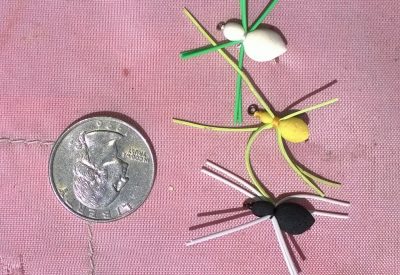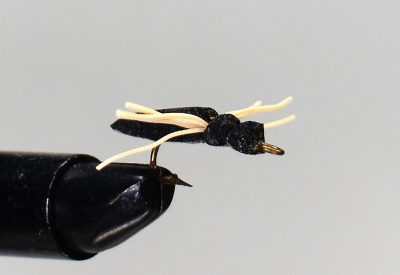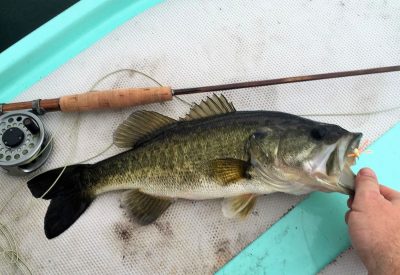The World of Flies
The Foam Spider .22 Long
Chris O’Byrne
Maybe we measure the Foam Spider as high caliber because we all cast it when we were new anglers. Or maybe because it catches fish. Maybe we measure it as small caliber because it is a basic fly for beginning anglers. All are true, but who says anything bad about .22 Long ammunition?
Using the new and high-tech foam in place of fur because it was “a deformable water resistant material,” William Schumann began tinkering with his idea in the 1930s. It earned a U.S. Patent in 1940 and joined the lineup of Schumann’s Famous Lures as the Dry Water Cricket.
Today the bodies are pre-formed to specific hook sizes. Some modern fly tiers, as did Schumann, add other materials such as hackle or chenille under the basic body. Most use a touch of Zap a Gap to hold the body down and take extra wraps attaching the foam in order to clearly segment the body. The foam bodies come in limited colors, so experiment with various colors of leg material to get the best effect for your water.
The presentation is basic and relaxed. Cast and leave. But be ready. Once laid down in likely bluegill or bass water, only tiny strips are needed, after the relatively thick rubber legs stop jiggling. As a guide, I like to tie this fly on when we are hunting relatively shallow water or when a tired client is pushing through to the end of the day.
Like standard ammunition, the foam spider is not just for beginners. We rediscover its virtues as we advance in skill. Reload your box today!
Materials Foam Spider
Hook: Dai Riki 700, match size of bug body
Thread: 140 D
Legs: Hareline, standard, medium round
Body: Wapsi Foam body




